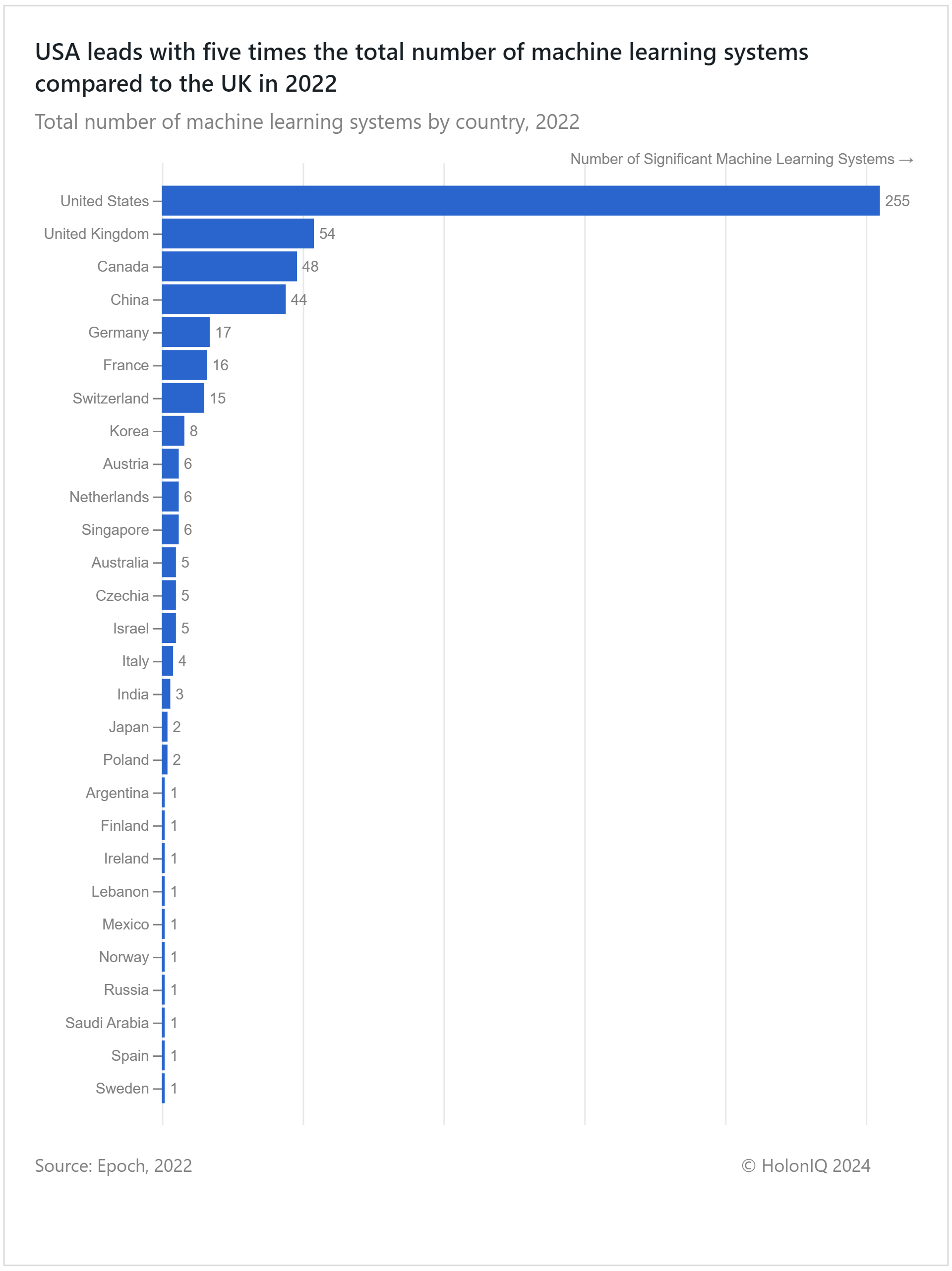🌎 +30% Asian Immigrants. Global Food Waste. US Leads in ML.
Chart of the Day #70 looks at Migration, Food Waste and Machine Learning Systems.
Namaste 🕉️
Restaurants and grocery stores are using AI to cut food waste by analyzing inventory and purchases, addressing the substantial issue of uneaten food, which accounts for up to 40% of produce in the US. New Zealand has tightened work visa rules due to high migration levels, requiring English proficiency and reducing maximum stays for low-skilled workers from five years to three.
Today's Topics
💻 Machine Learning. USA leads in machine learning systems
🗑️ Food Waste. 1/3 of global food production is wasted annually
🌎 Migration. 30% rise in migrants in Asia in the last decade
For unlimited access to over one million charts, request a demo.
💻 USA Leads In Machine Learning Systems

In 2022, the US led in machine learning systems with 255 systems, five times more than the UK's total. Canada and China follow, each with over 40 systems. The private sector has moved ahead of academia, releasing 32 significant machine learning models in 2022 compared to academia's three models. This shift is attributed to the industry's increased access to resources including data, computing power, and funding. Leading the charge are tech giants, software development firms, and artificial intelligence research organizations, all of which contribute to the acceleration of machine learning advancements. The United States not only produces the highest number of models but also boasts the largest pool of contributing authors. This trend underscores the nation's pivotal role in shaping the landscape of machine learning advancements.
🗑️ 1/3 of Global Food Production is Wasted Yearly

Wasted food, originating from various sources like unsold items and plate waste, amounts to about one-third of global food production annually and is valued at around $1 trillion. This surplus could feed over two billion people in the world. According to the UN, if food waste were a country, it would rank third in CO2 emissions after the USA and China. Despite China and India leading in the volume of food wasted, per capita figures show disparities, with affluent nations like Australia and the UK seeing significant amounts of food wastage due to overconsumption. In low-income countries, food loss occurs primarily during the early harvest and storage stages. Addressing food waste is crucial, with the UN aiming to halve global food waste by 2030 as part of its Sustainable Development Goals.
🌎 30% Rise in Migrants in Asia in the Last Decade

Over the past decades, Europe and Asia have emerged as key destinations for international migration, hosting 61% of the global migrants driven by factors such as strong economic growth. Policies addressing labor shortages are drawing migrant workers to Asia, as seen in countries like Thailand, Malaysia, South Korea, and Japan. Asia's evolving business landscape increasingly relies on foreign workers but managing cultural integration and labor market dynamics remains challenging.
North America hosts approximately 21% of the global migrant stock, with nearly 59 million international migrants in 2020. Africa accounts for 9%, Latin America and the Caribbean 5%, and Oceania 3%. Migrants in the EU, constituting 5.1% of their workforce, play a vital role in alleviating labor shortages across sectors, despite facing structural barriers that result in a lower employment rate compared to Europeans.
Like getting this newsletter? For unlimited access to over one million charts, request a demo.
Thank you for reading. Have a great week ahead!
Have some feedback or want to sponsor this newsletter? Let us know at hello@holoniq.com
